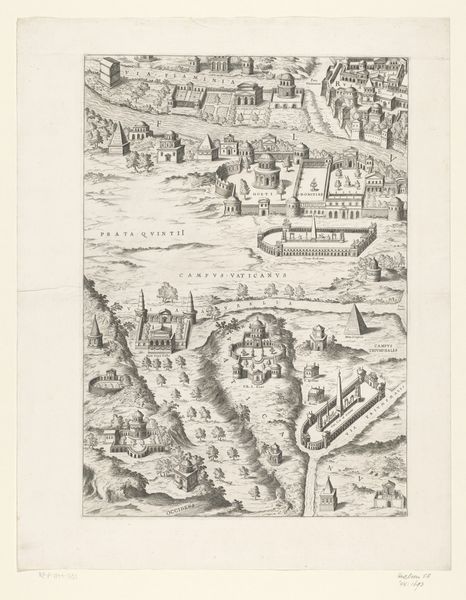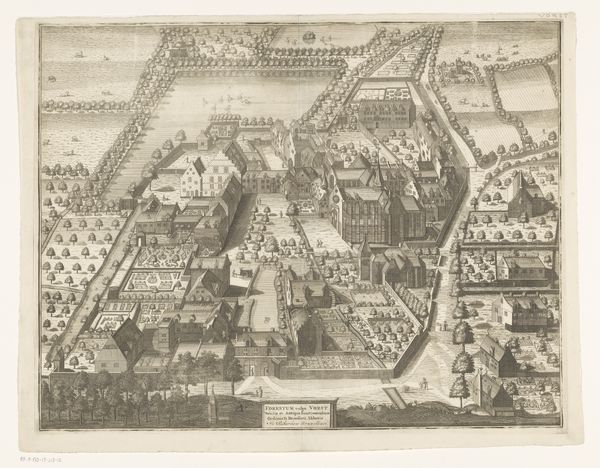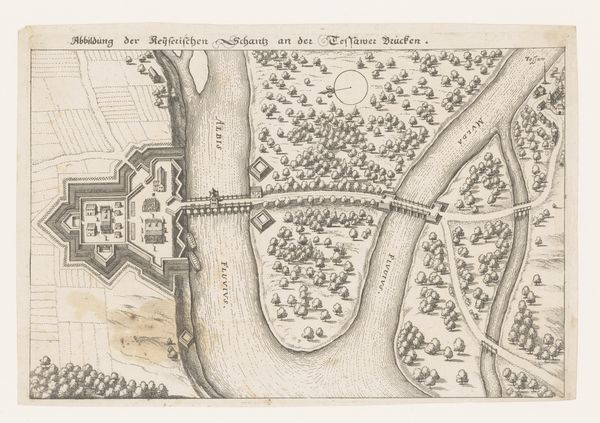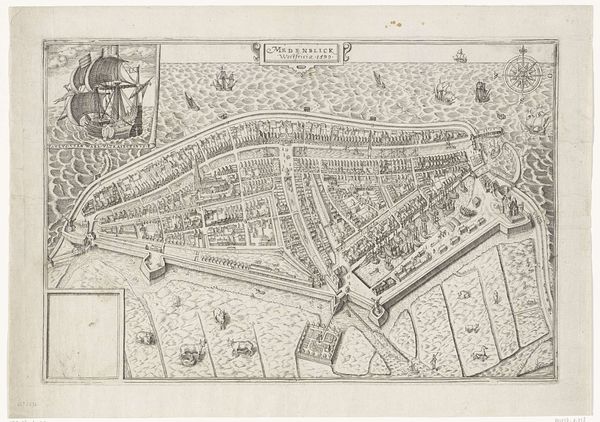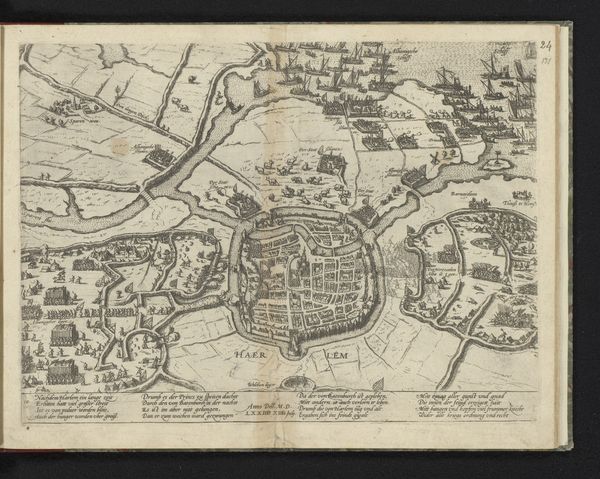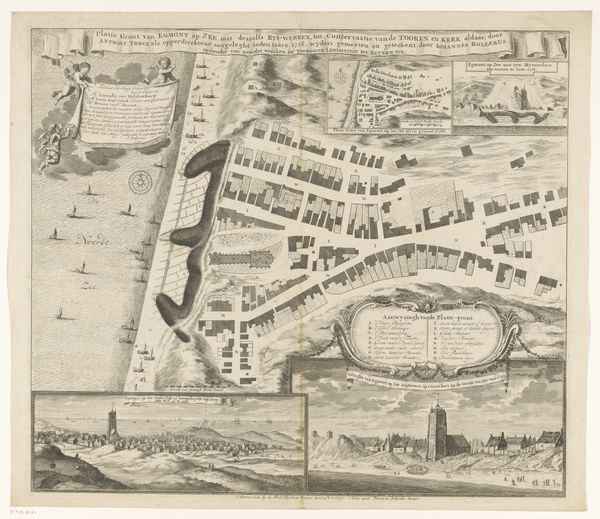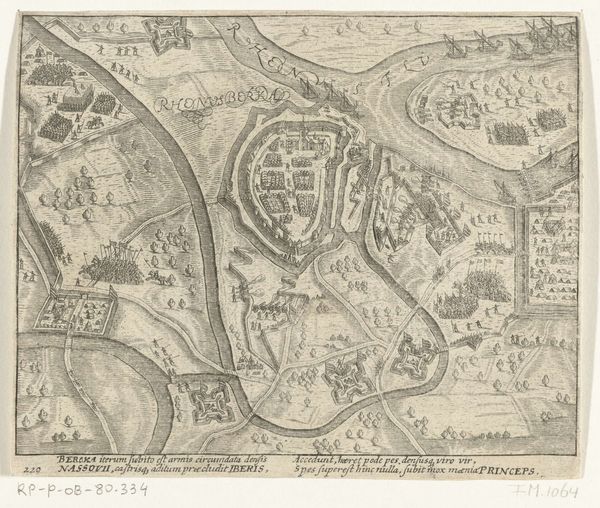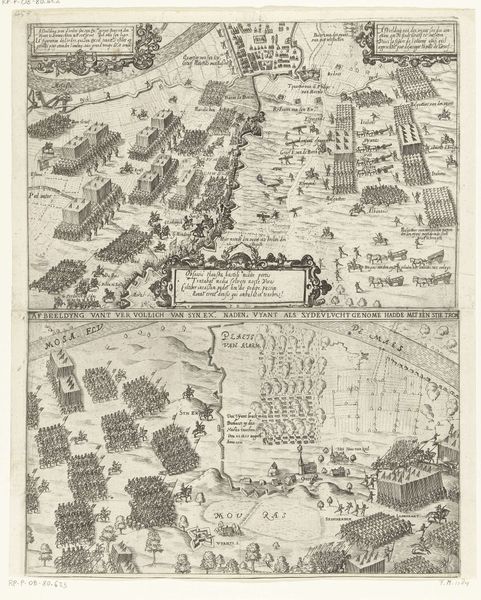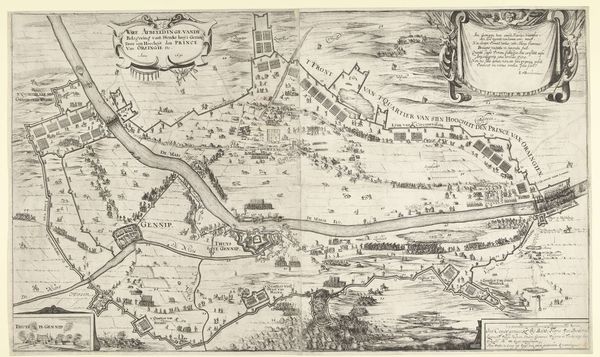
drawing, print, engraving
#
drawing
#
baroque
# print
#
old engraving style
#
landscape
#
cityscape
#
engraving
Dimensions: height 436 mm, width 325 mm
Copyright: Rijks Museum: Open Domain
Curator: Well, let’s turn our attention to this fascinating cityscape—it’s entitled “Gezicht op Luik (linkerdeel)” or "View of Liège (left part)," dating from 1652 and created by Julius Milheuser. It’s an engraving, a print, a fragment of something larger. What's your initial take? Editor: Chaos, but ordered chaos. It's so packed, yet those grid-like fields give it this bizarre sense of control, you know? The artist seemed determined to capture absolutely everything within Liège. Curator: It’s compelling, isn’t it? The symbols speak volumes about the era’s priorities. Cityscapes, particularly those rendered with such detail, were potent symbols of civic pride and power. Notice how the city, “Legia” as it's named at the top, rises above and contrasts with those ordered, agrarian landscapes. Editor: Right! It's like the wild tries to push back, but those cultivated patches say, "Nope, we've got this." I can't help but imagine each tiny house holding countless little dramas. Curator: Indeed. This image resonates with a duality that has endured. The ordered grid pattern that dominates much of the composition is broken up as the landscape reaches up to meet the city, yet, despite that disruption, there's that tension between the natural and the human imposition of structure on the natural world. Editor: And then you spot these fantastical emblems up top! Is that supposed to be some heraldic thingamajig with the baby angel and the shield? And then another heraldic piece to the upper right, balancing each other out. This feels like a slightly crazy version of "Where’s Waldo," but with 17th-century houses! Curator: Ha! I appreciate your humor! Each element of the imagery—the river snaking through, those crests, even the style of depiction, are deliberate symbols that reflect the worldview of that period, its belief in the divine right and cosmic order, all brought into focus by the detailed and comprehensive style so associated with the Baroque. Editor: Right, right…so it’s more than just showing us a pretty town; it's all about this very solid structure back then and wanting to represent something. Curator: Exactly! These engravings often served to communicate status, ambition, or political agenda through a shared, understood symbolic language. Editor: I love finding hints to connect a bit of historical knowledge with the piece of art. Well, thanks for unlocking this little historical puzzle for me! I’ll remember to look deeper into art and history. Curator: It's been a pleasure to unpack this cityscape with you. May your journeys through art be always full of unexpected encounters and revelations.
Comments
No comments
Be the first to comment and join the conversation on the ultimate creative platform.

